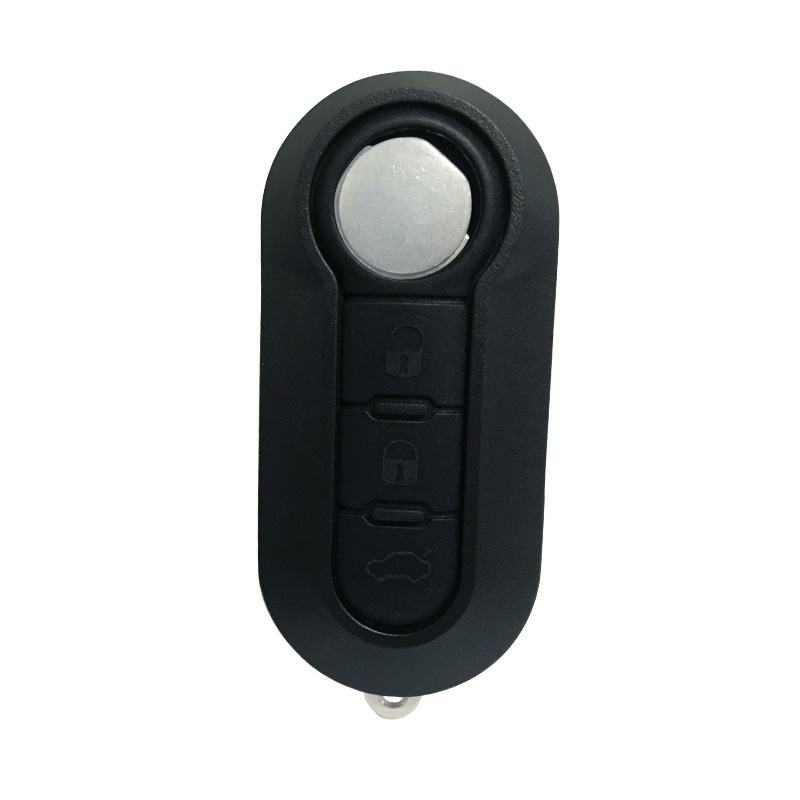Introduction
One of the most common complaints from car owners and aftermarket customers is car key button failure. Over time, the buttons on a key fob may become unresponsive, wear out, or even crack due to frequent usage and material aging. As an experienced automotive key OEM manufacturer, we understand how this issue impacts both end-users and distributors. In this article, we explain the root causes of button failure and outline how OEMs can address and solve these issues effectively.

Why Do Car Key Buttons Fail?
There are several key reasons why car key buttons become faulty over time:
Low-quality rubber or silicone materials that degrade with temperature, moisture, and UV exposure.
Mechanical fatigue from repeated pressing, leading to loss of elasticity or tearing.
Poor structural design, causing uneven force distribution or internal misalignment.
Weak PCB (Printed Circuit Board) contact pads, which reduce button responsiveness.
OEM Solutions to Button Durability Issues
As a leading OEM supplier, we implement a series of engineering, material, and manufacturing improvements to ensure long-lasting button performance.
1. Upgrading Rubber Material to High-Durability Silicone
We use premium-grade silicone rubber with high resilience and aging resistance. This material:
Maintains elasticity after 100,000+ press cycles
Resists UV light, oxidation, and high temperatures
Prevents cracking even in cold or humid environments
We also offer TPU (thermoplastic polyurethane) for enhanced durability in extreme climates.
2. Optimizing Button Structure and Ergonomics
Our key fob design team focuses on button geometry and support structure to ensure even pressure distribution and prevent mechanical stress. Key improvements include:
Reinforced contact domes for better tactile feedback
Anti-fatigue design for critical stress points
Dust and moisture-resistant membranes to protect internal components
3. Laser Etched or Molded Symbols to Prevent Wear
Printed button icons tend to fade quickly. We use laser-etched or dual-shot molded symbols that maintain appearance and function throughout the key’s life cycle.
4. Reliable PCB and Switch Integration
We use high-quality micro switches and gold-plated PCB contacts, reducing the chance of signal loss or misfires due to worn pads. Each key fob undergoes:
100% functional testing for all buttons
High-pressure actuation tests to simulate real-world use
Salt spray and environmental aging tests for long-term reliability
5. Customer Feedback Loop & Continuous Improvement
We collect feedback from global customers and repair technicians to identify recurring failure modes. Our R&D department actively applies these insights to improve future designs and production techniques.
Conclusion
By addressing the root causes of car key button failure, OEM manufacturers like us can deliver durable, reliable, and high-performance key solutions. Whether you're an automotive brand, distributor, or repair service provider, choosing a key from a quality-focused OEM ensures longer product life, fewer returns, and better customer satisfaction.
Want to Learn More?
Contact our team for custom key fob solutions, product samples, or technical support. We specialize in OEM car key design, manufacturing, and private labeling for global brands.

 Englishen
Englishen











 No.991 Xingxiu Road,Taiwanese Investment Zone, Quanzhou, Fujian Province,P.R.China
No.991 Xingxiu Road,Taiwanese Investment Zone, Quanzhou, Fujian Province,P.R.China +86 13960286508
+86 13960286508
 3D Reality Showroom
3D Reality Showroom
